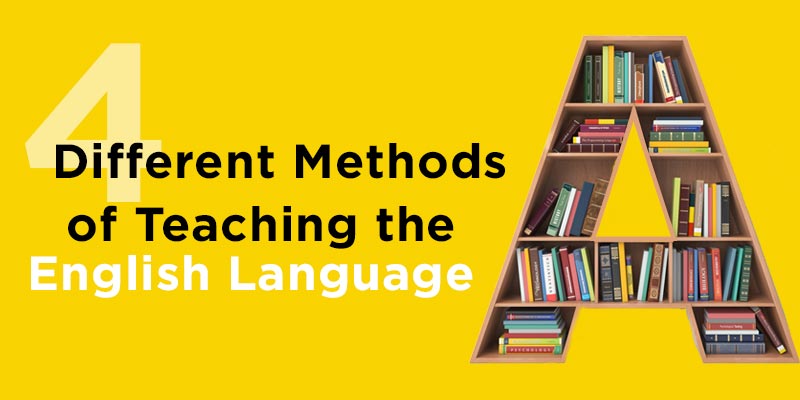Although we have many reasons for learning the English language, one prominent reason is that it is a world common communication language. But as learners, we have faced various challenges and struggle to acquire. It is because English is not a mother tongue for many of us. It is easy to understand and acquire unless we put little effort into learning.
So, if you want to learn English in interactive classroom sessions, you can join Spoken English Course Online and understand the English language nuances.
What are the old and new methods of teaching English? Whenever we think of the word classroom, we obviously think of the room where the lecturer stands before us and delivers the lecture for 35 to 45 minutes. This techniques of teaching English was prevalent some decades ago. Now, everything has become digital and visual, which has become a new English teaching methodology.
Over the years, there have been many changes in grammar or English teaching methods, and it is no longer considered to exist now. Now, we shall discuss teaching methods in English and grammar teaching methods.
Why are new teaching methods in English effective?
The preponderance of social media and the internet has changed education and teaching methods. There are various ways handled by the teacher while teaching the students; the language learning methods are:
- Learning English through social media.
- Through digital content.
- Through videos
- Live video classes
- English cartoons for learning English
- Gaming methodology
- By incorporating video and multimedia into lessons and presentations.
- Through online apps
Moreover, there are various techniques for teaching English in the digital world. So, what hindrance to learning English? Start learning with little interest.
If you intend to learn English using this new methodology, you can join Spoken English Classes in Chennai and learn grammar, syntax formation, vocabulary, etc.
5 New Methods of Teaching English in the Modern Classroom
Traditional approaches like the audio-lingual and direct methods still have some value, but they are outdated in the modern classroom. The most recent development in teaching modern languages is still regarded as the communicative approach, which gained popularity in the late 1990s. It is still a cornerstone of most TESOL/TEFL training programs.
But it is now unquestionable that the best efforts of educators and authors have fallen short of the demands of today’s students. This blog will demonstrate an in-depth examination of four innovative teaching techniques that are a hit with students.
Task-based Approach
In the traditional teaching method, the teacher focuses on imparting the learners orally and guiding them in taking notes. Though these steps motr=e4 effective, grammar teaching methods and language learning methods have become advanced.
In the modern classroom, students learn grammar and vocabulary through visual presentation. This makes the learner know instantly and helps them understand the picture. These teaching methods in English assist the learners in understanding better.
Moreover, task-based activities are assigned to improve students’ cognitive ability, which will help their interactive engagement and communication skills. In the task-based activities, the students are isolated and assigned to communicate with themself to meet the objective of the task.
Example:
- Form the words related to the word that is given
- Ordering at a restaurant
- Reserving a hotel room
- Or possibly more complex tasks like reviewing a film or expressing political thought.
This task will improve their cognitive ability and become a path to understanding the students individually.
Grammar, vocabulary, and language proficiency are merely how pupils can attain their intended results. Before implementing the task-based method, teachers must consider why their students are learning English. Then, teachers must understand how to assist their students in achieving their personal and professional objectives. The responses to these inquiries will aid in developing a curriculum pertinent to your students.
Join Spoken English Classes In Bangalore which helps the learner to enhance cognitive ability by assigning tasks and focusing on each learner individually.
Project-based Approach
The project-based approach is the best language learning method. This teaching method helps the learner’s expectations and improve their level of competencies in the English language and helps them improve personally and professionally.
For instance, if you’re teaching a business English course, you should consider the students’ motivations and develop your lesson plans appropriately.
First, we should teach them basic English conversation and daily use of English sentences at home or essential communication in everyday work life.
Slowly moving on to the difficulties they encounter would help you understand the student’s problems and challenges they face.
If you want to understand English in a better way, join Spoken English Class in Coimbatore which provides original videos, entertaining videos, conversation dialogue related to the course, and video-based materials to help you succeed.
Lexical Syllabus
Above, we have discussed skills and competencies learners need to develop. Based on their needs, this strategy assumes that students are familiar with the fundamental languages. Professional students, once again, require highly specialized terminology related to their field. For instance, just as “scalpel” is a crucial phrase for medical students, so is “profit” for business students.
As a result, evaluations must be based on what learners accomplished. Two examples of these tests are writing an email for a job application or scheduling an interview.
With this strategy, teachers will immediately identify the needs of their learners, concentrate on those needs, and help students broaden their perspectives as their communication abilities improve.
Activities can include creating dialogues or matching images and definitions. A more advanced twist might be to mention their preferred career or even make scenarios of what you will do if you are in high authority for the nation. It can be anything based on their interest.
Using Smartphones in the Classroom
Forbidding smartphones may be a missed opportunity to significantly improve learning experiences since almost everyone has internet connectivity or a data plan.
So, using a smartphone has both pros and cons. If you are a beginner, you must have a smartphone for referring to dictionaries, translation, and grammar usage. Like computers, smartphones can be used but must be utilized purposefully as a learning tool.
The WordReference.com mobile app, accessible through the Apple App Store and the Google Play store, is an excellent dictionary, translation, and grammatical reference tool. WordReference offers more than just translations; it also features a thesaurus, an English dictionary, and a forum where users can discuss tricky words or idioms.
Moreover, as tutors, we can refer to the various websites that provide activities and worksheets. Through these techniques of teaching English, smartphones enhance classroom instruction. Students must search websites for the data required to complete a worksheet. Students can also access free online assignments that help them practice the language and skills they learned in class using their devices.
Going paperless is another aspect that I believe suits smartphones and tablets. If the textbooks or other resources you’re utilizing include PDF versions, you might be able to save time for students and the environment at the same time.
Now, you would have understood the methods of teaching grammar and teaching methods in English. So, if your student intends to learn grammar structure and enhance communication skills, Join Spoken English Classes in Anna Nagar and learn English language nuances and improve communication.


